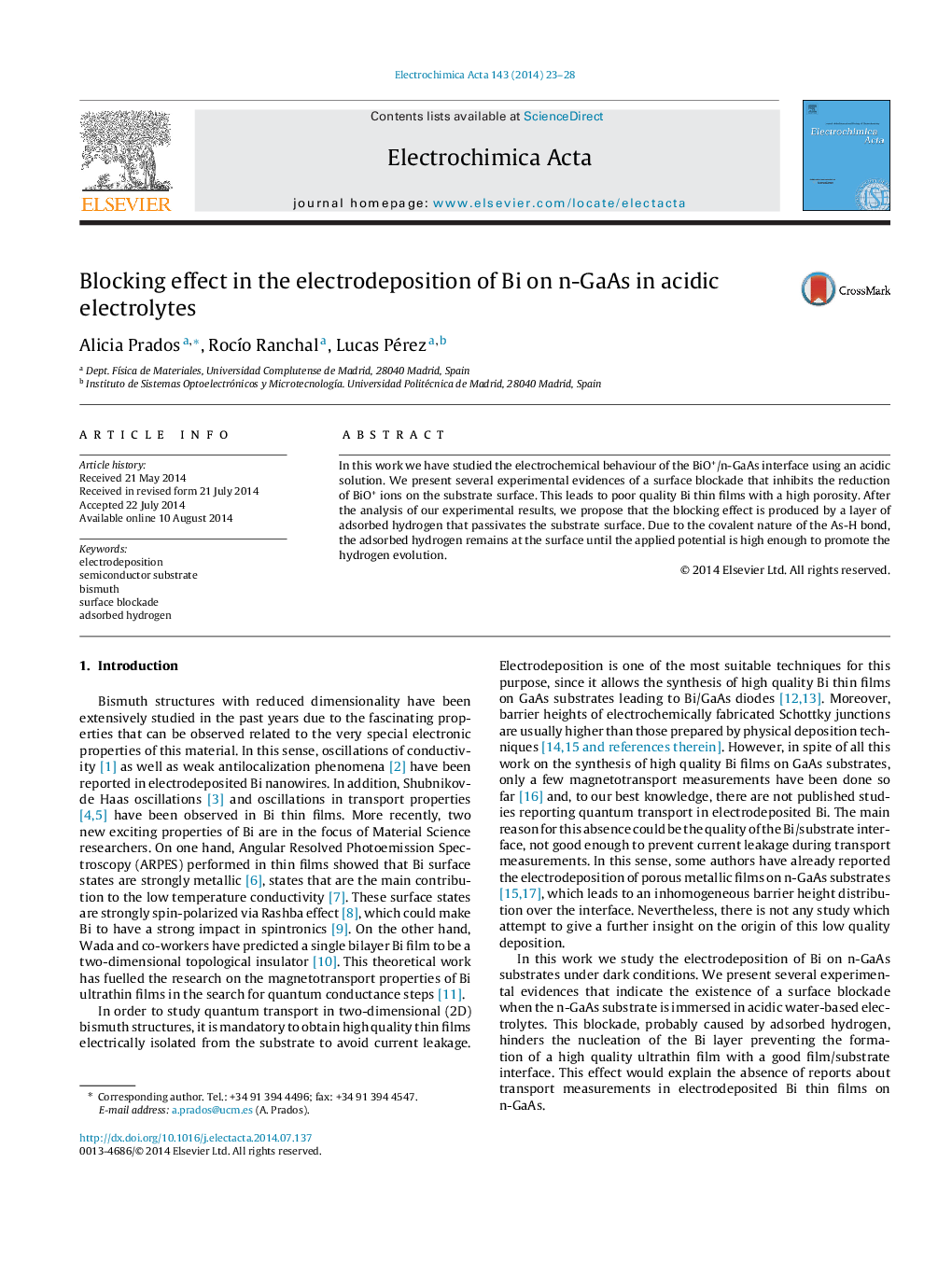| Article ID | Journal | Published Year | Pages | File Type |
|---|---|---|---|---|
| 185132 | Electrochimica Acta | 2014 | 6 Pages |
•The reduction of Bi on n-GaAs from an acidic electrolyte is inhibited.•The substrate surface is blocked by an adsorbed hydrogen (Hads) layer.•BiO+ cannot get reduced on n-GaAs substrates until the reduction of the Hads starts.
In this work we have studied the electrochemical behaviour of the BiO+/n-GaAs interface using an acidic solution. We present several experimental evidences of a surface blockade that inhibits the reduction of BiO+ ions on the substrate surface. This leads to poor quality Bi thin films with a high porosity. After the analysis of our experimental results, we propose that the blocking effect is produced by a layer of adsorbed hydrogen that passivates the substrate surface. Due to the covalent nature of the As-H bond, the adsorbed hydrogen remains at the surface until the applied potential is high enough to promote the hydrogen evolution.
